History of the Nugent Family
History of the Nugent Family . The is a very concise history of the Nugent family. My wife’s maiden name is Nugent. He family immigrated to North America and settled in Irish Town New Brunswick Canada and eventually they made their way to Southern California. Here is the info from the web site on the internet. Link to the original article
Nugent motto is in Latin : Decrevi
“I have determined” or “I have resolved”
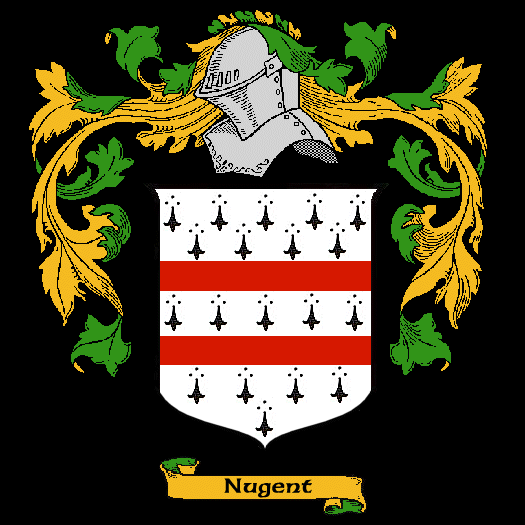
Link to Jesmer family history page
Link to Jesmer Mysteries Explained
History of the Nugent Family
http://www.libertychapelcemetery.org/files/family/surname.html
NUGENT SURNAME HISTORY
by Marian Keaney
The most prominent Anglo-Norman family with extensive Westmeath connections is undoubtedly that of Nugent. The Nugents originated in Normandy, accompanied William the Conqueror to England and fought at the Battle of Hastings. In 1172 Sir Gilbert de Nogent came to Ireland with Sir Hugh de Lacy. Through a clever marriage to deLacy’s daughter, he was granted the Barony of Delvin in CountyWestmeath, and distributed this large tract of land among his brothers. You can view the castle of Sir Gilbert de Nogent by clicking on the Coat of Arms below.
By the end of the sixteenth century, the Nugents had fortified this area and had built castles at many places, including Carlanstown, Loughegar, Killough, Drumcree, Bracklyn, Donore and Streamstown. The Nugents became admirers of the Gaelic way of life and acted as patrons of the O’Coffeys, the bardic clan of Westmeath.
Many distinguished soldiers, lawyers, churchmen and authors belong to the Nugent family. Among the most distinguished were Sir Christopher Nugent, who was the author of Queen Elizabeth’s Primer of the Irish language, and Robert Nugent, who married in succession three wealthy widows and caused Horace Walpole to invent the new word “nugentize” to describe this desirable practice.
Robert was also the author of several essays, odes and poems. Thomas Nugent was a considerable scholar, while William Nugent gained repute as a Gaelic poet, the well known Gaelic poem Diombaidh Triall O Thulchaibh Fail, is attributed to him. An extensive biography of Francis Lavalin Nugent 1569-1635, agent of the counter-reformation was published by F.X. Martin, OSA in 1962.
The memoirs of Sir Hugh Nugent, well-known throughout the equestrian world, were published under the title, The Sir, shortly after his death. Sir Hugh dictated his memoirs after he became blind due to an accident and they were arranged for publication by his grandson, Nicholas Nugent of BallinloughCastle. Located at Clonmellon, a sense of antiquity prevails as you enter the gates of Ballinlough. Perched on a hill overlooking two lakes. The 17th century castle is the home of Sir John and Lady Nugent. The gardens have been under restoration since 1994, and are now open to the public, together with the lakeside and woodland walks.
Nugent motto is in Latin : Decrevi
“I have determined” or “I have resolved”
According to family historians the Nugents trace their descent from Evas de Belesme, powerful Norman Baron, Lord of the Castle, lands and tower of Belesme, Normandy, who died in the year 993AD. By his wife Godchilda, he was the father of a son named William. This William, Lord of Belesme and Count of Alancon, served under Robert King of France. By his first wife Matilda he left three sons, Fulke, Robert and William de Belesme. His second wife Adelais gave him another son Warrin de Belesme who became Lord of Damfort, Mortaign and Nogent in Normandy and Viscount of Chateaudun. Warrin died in 1026 leaving issue by his wife Millicent, the daughter and heir of Hugh, Viscount Chateaudun, of a son named Geoffry (or Geoffrey). Geoffry, Viscount Chateaudun, Lord of Montaign, Nogent and Gallardon, married Elvdic, daughter of Odo, Count of Champaigne, and had at least two sons, Hugh and Rotron de Nugent, of whom the former died young.
Rotron de Nugent (the first of the family so designated), Viscount Chateaudun, married Adeline, daughter of Nigen de Mowbray, of Picardy, and was the father by her of Geoffry, Hugh, Rotron and Fulquois de Nugent. Of these brothers, the first was created Count of Mortaign and Nogent and commanded a division of the army of William the Conqueror in 1066. Hugh became Viscount Chateaudun, and Fulquois, who was also a follower of the Norman Conqueror at the Battle of Hastings. His sons were Gilbert, Richard, Christopher and John de Nugent, of whom the last three accompanied Sir Hugh de Lacie on his expedition to Ireland in the year 1172.
Pedigree of the Nugent family (counts)
by Sir William Betham, the Ulster King of Arms – 1853
Genealogy of the pedigree type, written in the form of a table of ancestors, with text in English, was made to order by the duchess Giovanna (Johanna) Riario Sforza, wife to the Austrian count and roman duke, lieutenant marshal Laval Nugent. Bound in a hard-cover book, consisting mostly of a schematic outline of the 85 family branches in the male and female line; it begins with Ives de Belesme (995), the Norman founder of the family and an ancestor of Fulco (1066-1090) who had together with his brothers moved to England and was the first to call himself de Nogent (or Nugent) and goes on listing their descendants of both sexes up to the time of Laval (1777-1862), ending with his six children – sons Albert, Gilbert and Arthur, and daughters Beatrix, Jane and Leontine.
The Nugent family is a branch of the great house of Belesme, being decended from Wulke de Belsame, Lord of Nogent le Rotrou, who accompanied William the Conqueror and fought in the Battle of Hastings, October 14th 1066. The root word from which the name is derived is “gent”. In the course of time No-gent became the name of a number of towns ideally situated on the banks of a river, such as Nogent-sur-Seine and Nogent-sur-Marne. Gilbert and Hugh de Nugent, cousins of the Lord of Nogent is Rotrou, founded the name and family in Ireland in the time of Henry II. They settled in Westmeath and the estate remained in the family for many generations.
NOGENT-SUR-SEINE, a town of north-central France on the left bank of the Seine, 35 miles N.W. of Troyes on the Paris-Belfort line. The river at this point forms an island, which supports a stone bridge of the I7th century. The chief building is the church of St Laurent (1421- 1554). A lateral portal in the flamboyant style and the Renaissance tower at the west end are of great beauty.
NOGENT-SUR-MARNE, a town of northern France, in the department of Seine, on a hill on the right bank of the Marne, 6 miles E. of Paris by rail. The Eastern railway here crosses the Marne valley by a viaduct 875 yds. in length. Nogent has a Gothic church, with a tower of the Romanesque period, in front of which there is a monument to Watteau, who died here in 1721. Chemical products are manufactured. The fine situation of the town gained it the name of Beaute, and Charles V built a chateau here (demolished in the 18th century) which was presented by Charles VII to Agnes Sorel with the title of Dame de Beaute. An island in the Marne to the south of the town is still known as the ‘lié de Beauté. The Halles centrales (central market) of Paris, built for Napoléon III in 1851 was located here. The market was relocated in 1969 to Rungis, in the southern outskirts of Paris. You can join the French Foreign Legion at Fort de Nogent. It is located in Nogent-sur-Marne. Below is a picture made around 1871 of the fort with its cannon.
NOGENT-LE-ROTROU, a town of northern France is 38 miles W.S.W. of Chartres by rail. In the early part of the 17th century the overlordship was acquired by the duke of Sully, financial minister of Henry IV. In the courtyard of the hospital, originally founded at the end of the 12th century, there is a small building containing the tomb of Sully and his wife. On the hill overlooking the town stands the chateau of the counts of Perche, of which the donjon dating from the first half of the 11th century is the oldest portion. To RotrouI., founder of the chateau, the town owes the second part of its name.
Kathleen Thompson. Power and Border Lordship in Medieval France: The County of the Perche, 1000-1226. (Studies in History New Series.) London: Royal Historical Society, and Rochester, N.Y.: Boydell. 2002. Pp. xi, 225. $70.00. ISBN : 0-86193-254-4
Amazon.com ISBN : 0-86193-254-4
This tells the whole story of the beginnings of the Nugent family. The Nugents (De Nogent) who came to England in 1066, were very probably illegitemate sons of Rotrou I de Chateaudun (1005-1049), and were left out in the cold in the succession. Geoffrey II (1033-1100) got all the goodies, and this may explain why the other “brothers” left to find fortune with William the Conqueror.
This is the first modern account to describe the emergence of the northern French county of the Perche, and the rise of a relatively minor noble family from obscure origins to princely power. The Rotrou family ruled the Perche from around the year 1000 until 1226. They took part in many of the most famous military engagements of the middle ages, from the Norman Conquest of England in 1066 to the recovery of territory from the Muslims in twelfth-century Spain. Their involvement in crusading initiatives was told in the popular poetry of the day, and they came to number the kings of France, England, Aragon and Sicily, as well as the Holy Roman Emperor, among their kinsmen. This narrative explains the family’s transformation and consolidation of its position in the context of a vibrant and expanding society in the years after 1000, looking at their territorial ambitions, construction of a feudal clientele and operation of lordship through female family. Dr KATHLEEN THOMPSON is Honorary Research Fellow, University of Sheffield.
Another page with Nugent history is the Nugents of Farrenconnell.
Nugent, (Gilsenan)
Though not an indigenous Irish surname Nugent may be regarded as completely Irish today, since the Nugents have been important people in Ireland since the twelfth century when they came at the time of the Anglo-Norman invasion, their home country being France. They were then called do Nogent, I.e. of a place called Nogent in France, where they can trace their descent back to A.D. 930. The Nugents were one of the Norman families which got extensive grants of land in Ireland: theirs was in Meath and Westmeath. their descendants are found to-day in every walk of life and the name is frequently met with in all the provinces except Connacht. They are now numerous in Co. Cork, where a branch of the family established themselves and formed a sept in the Irish fashion: their chief resided at AghavartenCastle, near Carrigaline. In Irish history the Nugents have chiefly distinguished themselves as soldiers. In the Dictionary of National Biography and similar works or reference no less than twelve appear as such between the years 1444 and 1862: four of these were upholders of the English interest; and eight were either rebels or supporters of the Stuart cause.
Perhaps the most outstanding of these was Christopher Nugent (d. 1731), who after the siege of Limerick in 1691 took service with the French and commanded Sheldon’s regiment, later known as Nugent’s regiment. He took part with James II in the 1715 expedition to Scotland. In the course of his distinguished military career he was wounded at least twelve times. John Nugent (1642-1754), fifth Earl of Westmeath, who also served with distinction in James II’s Irish army and in that of France, was the last Catholic holder of the title. Many other Nugents were prominent among the Wild Geese in France and Austria.
The Gaelic name Mac Giolla Seanain, normally anglicized Gilsenan, that of a sept belonging to Meath and Cavan, has also in some cases curiously taken the form Nugent in English. The great majority of Nugents, however, are of the stock referred to above.
Origin Displayed: Irish
Non-Gaelic elements made their first appearance in Irish nomenclature after the Strongbow settlers began to arrive on Irish shores. Although the Irish already had an established a system of hereditary surnames, the Anglo-Normans also brought their own traditions with them when they arrived. The two systems were not extremely conflicting, and eventually drew upon one another. Although local surnames, such as Nugent, were not entirely unknown to the Irish, this form of surname was much more popular with the Strongbownians. Local names were taken from the names of a place or a geographical feature where the person lived, held land, or was born. Originally, these place names were prefixed by de, which means from in French. This type of prefix was eventually either made a part of the surname, if the place name began with a vowel, or was eliminated entirely. The local names of these Anglo-Norman invaders first referred to places in Normandy, or more typically England, but eventually for those Strongbownians or their descendents that remained in Ireland, the local names really did begin to refer to local places or geographical features of the island. The Nugent family appears to have originally lived in one of the many places called Nogent in France. The surname Nugent belongs to the large category of Anglo-Norman habitation names, which are derived from pre-existing names for towns, villages, parishes, or farmsteads. The Gaelic form of the surname Nugent is Nuinseann.
Spelling variations of this family name include: Nugent, Nogent, Newgent, Neugent, Newgant, Newgeant, Nuegent, Nougent, Newjeant, Nujent, Noigent, Nuigent, Nuijent, Nushend, Newshent, Newshand, Neushant and many more.
First found in countyWestmeath where they were seated after 1172.
Some of the first settlers of this family name or some of its variants were: Christopher Nugent who settled in Virginia in 1638. Christopher was transported in 1634 or 5 on the John and Dorothy by Capt. Adam Thorougood. There is a deed from a Howard Cobb to Christopher Nugent on 7 May 1638 on land in Virginia. He removed before 1672 to Somerset Co. Maryland where his daughter Katharine married William Onorton (Onaughton-O’ Neachtain) also of Ireland. They must have known each other in Virginia and left about the same time. William was of the ancient royal family of O’ Neachtain of Ireland and I suspect Christopher was probably of the Nugent family there, descendents of Sir Gilbert of Normandy who came over with Sir Hugh de Lacie in the 12th century and had a castle of Devlin. Most of these families were tricked, in the time of Elizabeth, into giving up control of their lands in Ireland, they being Catholic, or she simply seized them. The family estates were declared forfeit after the Battle of Boyne and many left for America or were forced into indentureship. There was a Christopher in Westmeath Ireland in the early 1600s.
Arthur, Charles, Daniel, Edward, Hugh, Henry, Isabella, Jane, John, Margaret, Martin, Michael, Patrick, Peter, Richard, Robert, Terence, Thomas and William Nugent all arrived in Philadelphia between 1840 and 1860.
This is the first modern account to describe the emergence of the northern French county of the Perche, and the rise of a relatively minor noble family from obscure origins to princely power. The Rotrou family ruled the Perche from around the year 1000 until 1226. They took part in many of the most famous military engagements of the middle ages, from the Norman Conquest of England in 1066 to the recovery of territory from the Muslims in twelfth-century Spain. Their involvement in crusading initiatives was told in the popular poetry of the day, and they came to number the kings of France, England, Aragon and Sicily, as well as the Holy Roman Emperor, among their kinsmen. This narrative explains the family’s transformation and consolidation of its position in the context of a vibrant and expanding society in the years after 1000, looking at their territorial ambitions, construction of a feudal clientele and operation of lordship through female family. Dr KATHLEEN THOMPSON is Honorary Research Fellow, University of Sheffield.
Another page with Nugent history is the Nugents of Farrenconnell.
Nugent, (Gilsenan)
Though not an indigenous Irish surname Nugent may be regarded as completely Irish today, since the Nugents have been important people in Ireland since the twelfth century when they came at the time of the Anglo-Norman invasion, their home country being France. They were then called do Nogent, I.e. of a place called Nogent in France, where they can trace their descent back to A.D. 930. The Nugents were one of the Norman families which got extensive grants of land in Ireland: theirs was in Meath and Westmeath. their descendants are found to-day in every walk of life and the name is frequently met with in all the provinces except Connacht. They are now numerous in Co. Cork, where a branch of the family established themselves and formed a sept in the Irish fashion: their chief resided at AghavartenCastle, near Carrigaline. In Irish history the Nugents have chiefly distinguished themselves as soldiers. In the Dictionary of National Biography and similar works or reference no less than twelve appear as such between the years 1444 and 1862: four of these were upholders of the English interest; and eight were either rebels or supporters of the Stuart cause.
Perhaps the most outstanding of these was Christopher Nugent (d. 1731), who after the siege of Limerick in 1691 took service with the French and commanded Sheldon’s regiment, later known as Nugent’s regiment. He took part with James II in the 1715 expedition to Scotland. In the course of his distinguished military career he was wounded at least twelve times. John Nugent (1642-1754), fifth Earl of Westmeath, who also served with distinction in James II’s Irish army and in that of France, was the last Catholic holder of the title. Many other Nugents were prominent among the Wild Geese in France and Austria.
The Gaelic name Mac Giolla Seanain, normally anglicized Gilsenan, that of a sept belonging to Meath and Cavan, has also in some cases curiously taken the form Nugent in English. The great majority of Nugents, however, are of the stock referred to above.
Nugent Castle
Delvin, County Westmeath, Ireland
This castle is said to have been built in 1181 by Hugh de Lacy, Lord of Meath, for his brother-in-law, Sir Gilbert de Nugent who resided in it for some time before building the neighboring “Castle of Clonyn”. The second castle was burnt at Cromwell’s approach during the parliamentary war.
Sir Gilbert De Nogent, came to Ireland in 1171 with Hugh de Lacy, who became Norman Lord of Meath. Gilbert settled on land at Delvin, in the modern county of Westmeath and was gramted the title Baron of Delvin. Gilbert died in 1202 and was succeeded by his brother Richard, known as Di Capella, meaning “of the horses”. It is almost certain that he was “Ricardus filius Gilberti”, one of the signatories to the granting of the lands of Meath.
The families involvement with Cavan began in the 1500s, when the power of the Clan Mahon O’Reillys began to decline. Clan Mahon at this time extended deep into the modern counties of Meath and Westmeath. When the Tudors came to power in England they used the Anglo Norman lords of Leinster to limit the power of the Gaelic clans. The Nugent, along with the Plunketts, another Anglo Norman family began to push Clan Mahon back to the modern borders of county Cavan in the early 1500s. Even in the second half of the sixteenth century many of the Irish chieftains did not seem to realize that there was a conquest in progress at all.
In 1532 Richard Nugent, 12th Baron of Delvin (the Black Baron) built Ross Castle on the southern shore of Lough Sheelin on the site of an earlier O’Reilly castle. The 13th Baron also Richard was killed in a skirmish near Finea in 1559. Before his death he had been granted a lease on confiscated church land in Cavan. By the time of the Plantation of Ulster the Nugents had extensive lands in south Cavan including most of the modern parishes of Ballymachugh and Mullahoran.
The family remained Catholic in the decades after the plantation of Ulster and they went on acquiring land in Cavan, including one large grant to Christopher the 14th Baron for holding Finea for the Crown, during the nine year war (1594-1603). Like the rest of the catholic Anglo Norman families they backed the Catholic side in the 1641-53 war, and as a result they lost most of their lands in Cavan.
One branch of the family continued to live and own land in Cavan, at Farrenconnell, in Mountnugent parish, not far from Ross Castle. It was this branch that gave its name to the parish and village of Mountnugent. The most famous of them was Major General Sir Oliver Nugent who commanded the famous 36th Ulster division in the first world war. The last Nugent to live at Farrenconnell died in the 1980s.
The pictures of this 900 year old castle were made March 1999 during a visit made to Ireland by Angie Nugent Farrar. Her pictures are appreciated. My last visit to the castle was on June 27, 1987 during a vacation trip to Ireland. Some of the early Nugent’s are buried at Fore, Westmeath, Ireland in a cemetery next to the St. Feichin church.
Book a room at Ross Castle which was begun by Richard Nugent, 12th Baron of Delvin (the Black Baron), in the year 1533. The tower was completed by him in 1537. The great hall and further extensions were finished by his grandson and successor, Richard, the 13th Baron, by 1539. Castle of Ross commands magnificent views of Lough Sheelin, a 4500 acre lake famous for it’s brown trout and liberally stocked perch and large pike.
Ballinlough Castle is the home of Sir John Nugent and Lady Nugent. This castle has a golf club and is located at Clonmellon, County Meath, Ireland. The castle is open to the public from May 1 through September 1.
http://users.hal-pc.org/~nugent/castle.html
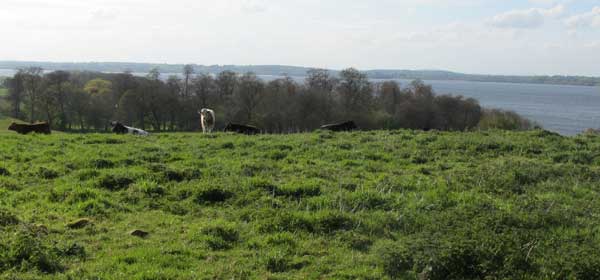
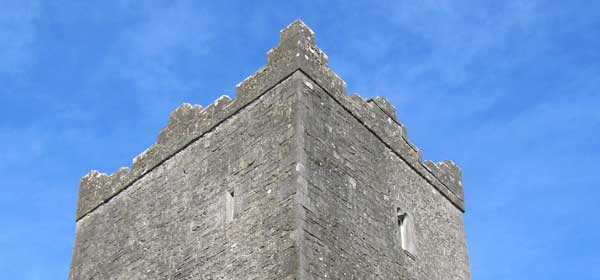
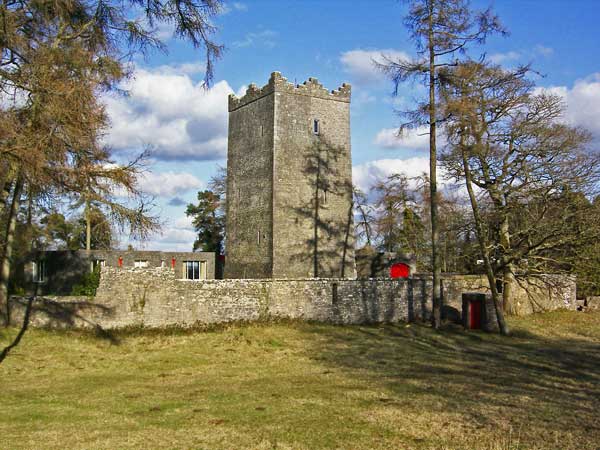
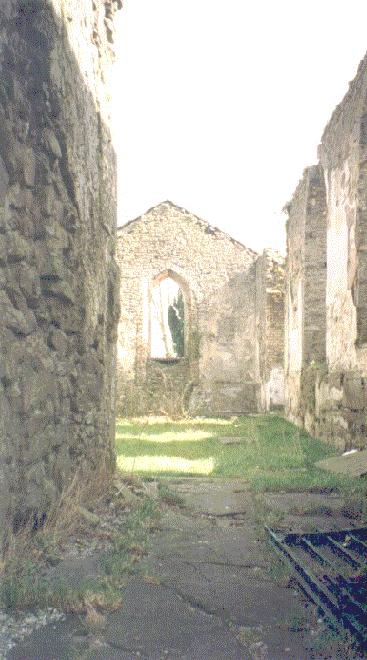
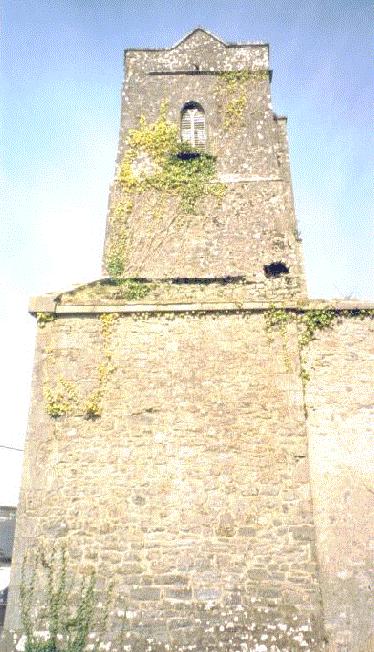


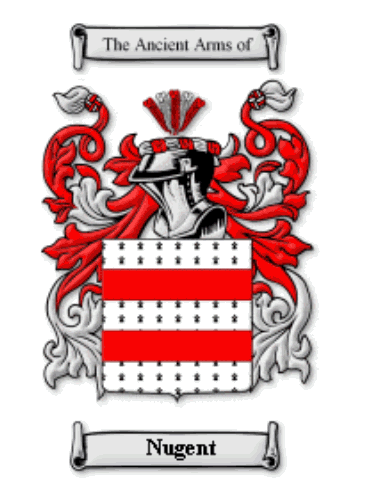
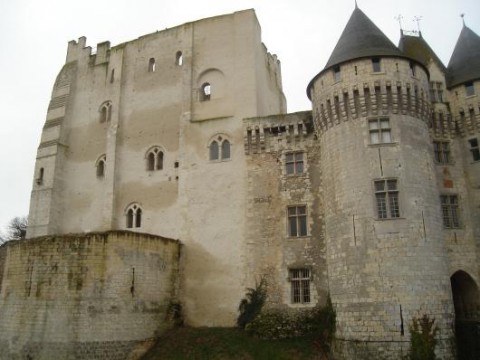







Interact with us using Facebook